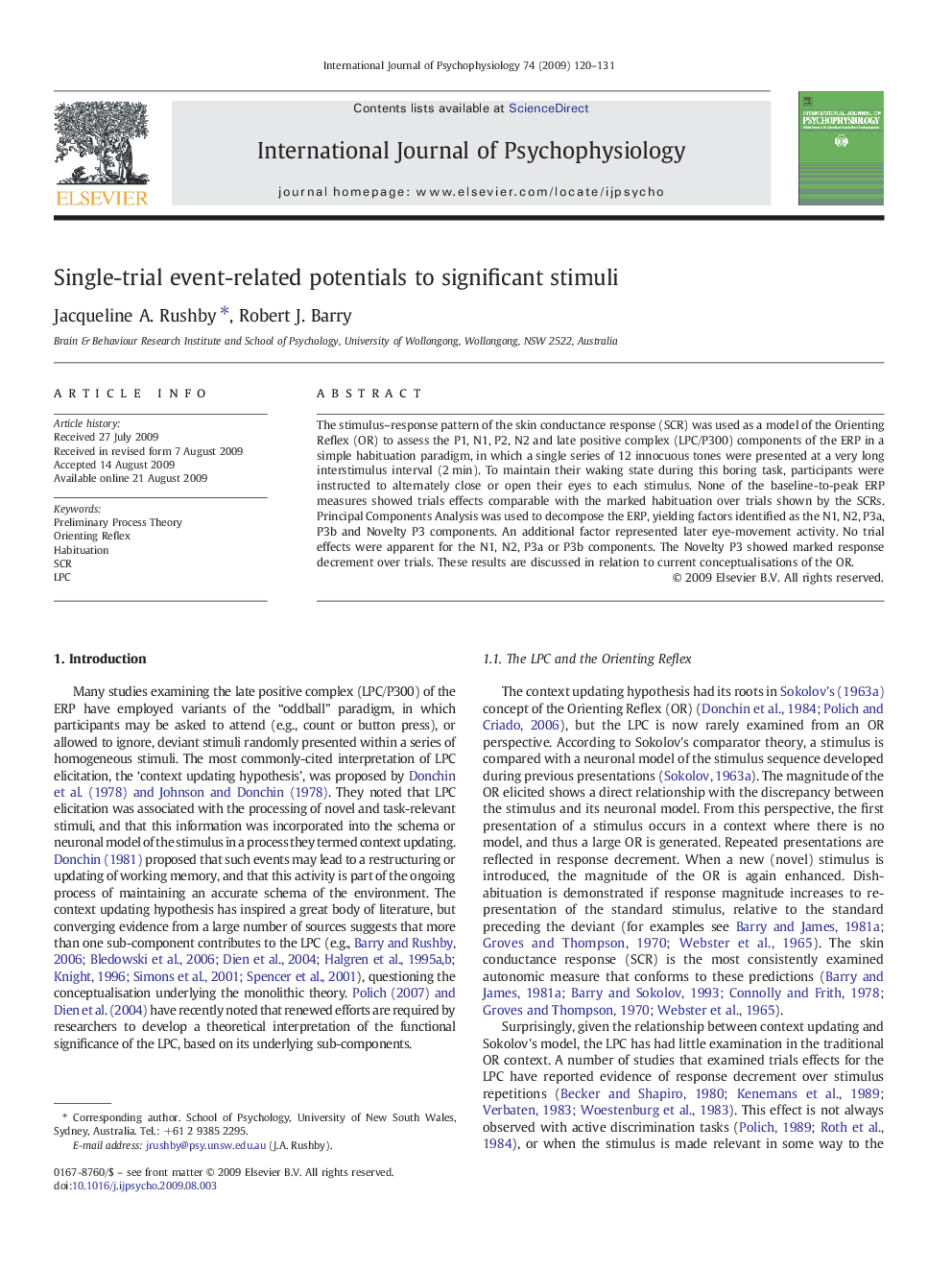| Article ID | Journal | Published Year | Pages | File Type |
|---|---|---|---|---|
| 930923 | International Journal of Psychophysiology | 2009 | 12 Pages |
The stimulus–response pattern of the skin conductance response (SCR) was used as a model of the Orienting Reflex (OR) to assess the P1, N1, P2, N2 and late positive complex (LPC/P300) components of the ERP in a simple habituation paradigm, in which a single series of 12 innocuous tones were presented at a very long interstimulus interval (2 min). To maintain their waking state during this boring task, participants were instructed to alternately close or open their eyes to each stimulus. None of the baseline-to-peak ERP measures showed trials effects comparable with the marked habituation over trials shown by the SCRs. Principal Components Analysis was used to decompose the ERP, yielding factors identified as the N1, N2, P3a, P3b and Novelty P3 components. An additional factor represented later eye-movement activity. No trial effects were apparent for the N1, N2, P3a or P3b components. The Novelty P3 showed marked response decrement over trials. These results are discussed in relation to current conceptualisations of the OR.
